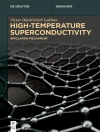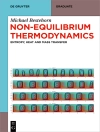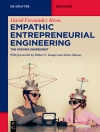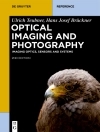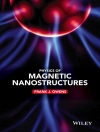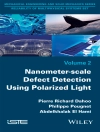This book collects papers presented in the Invited Workshop, “Liutex and Third Generation of Vortex Definition and Identification for Turbulence, ” from CHAOS2020, June 9-12, 2020, which was held online as a virtual conference. Liutex is a new physical quantity introduced by Prof. Chaoqun Liu of the University of Texas at Arlington. It is a vector and could give a unique and accurate mathematical definition for fluid rotation or vortex. The papers in this volume include some Liutex theories and many applications in hydrodynamics, aerodynamics and thermal dynamics including turbine machinery. As vortex exists everywhere in the universe, a mathematical definition of vortex or Liutex will play a critical role in scientific research. There is almost no place without vortex in fluid dynamics. As a projection, the Liutex theory will play an important role on the investigations of the vortex dynamics in hydrodynamics, aerodynamics, thermodynamics, oceanography, meteorology, metallurgy, civil engineering, astronomy, biology, etc. and to the researches of the generation, sustenance, modelling and controlling of turbulence.
Table of Content
Part 1. Liutex Theory and Method.- Chapter1. Liutex and Third Generation of Vortex Identification Methods.- Chapter2. Incorrectness of the Second Generation Vortex Identification Method and Introduction to Liute.- Chapter3. Dimensional and Theoretical Analysis of Liutex and Second-Generation Vortex Identification methods.- Chapter4. Mathematical study on local fluid rotation axis–Vorticity is not the rotation axis.- Chapter5. No vortex in flows with straight streamlines—Some comments on real Schur forms of velocity gradient ∇v.- Chapter6. Mathematical definition of vortex boundary and boundary classification based on topological type.- Chapter7. A comparison of Liutex with other vortex identification methods on the multiphase flow past a cylinder using LBM on GPU.- Chapter8. On the comparison of Liutex method with other vortex identification methods in a confined tip-leakage cavitating flow.- Chapter9. Lagrangian Liutex.- Chapter10. Visualizing Liutex Core Using Liutex line and Liutex tubes.- Chapter11. Analysis of difference between Liutex and λ_ci.- Part 2. Liutex Applications for Turbulence Research.- Chapter12. Hair-pin Vortex Formation Mechanisms based on LXC-Liutex Cores in Thermal Turbulent Boundary Layer with Rib-tabulator.- Chapter13. Liutex in the vortex statistics of 2D turbulent system.- Chapter14. Liutex and Proper Orthogonal Decomposition for Vortex Structure in the Wake of Micro Vortex Generator.- Chapter15. Study on the Formation and Evolution of Asymmetrical Vortex Structures in the Late Transitional Boundary Layer.- Chapter16. Experimental studies on vortex structures based on MSFLE and Liutex.- Chapter17. Correlation Analysis between low frequency shock oscillation and Liutex in SBLI.- Chapter18. Micro-Ramp Wake Structures Identified by Liutex.- Chapter19. Application of Liutex and some other second-generation vortex identification methods to direct numerical simulation data of a transitional boundary layer.- Part 3. Liutex Applications in Engineering.- Chapter 20. Investigation of Flow Structures around Cylinders with High Reynolds Number by Liutex Vortex Identification Methods.- Chapter 21. Vortex Identification for Study of Flow Past Stationary and Oscillating Cylinder.- Chapter 22. Simulation and Analysis of Breaking Waves in Deep Water.- Chapter 23. Numerical Investigation of Complex Flow Field in Ship Self-Propulsion and Zigzag Maneuverability .- Chapter 24. Application of Liutex for Analysis of Complex Wake Flow Characteristics of Wind Turbine.- Chapter 25. Application of Omega-Liutex identification method in the cavitating flows around a three-dimensional bullet .- Chapter 26. Analysis of Vortex Evolution in Turbine Rotor Tip Region Based on Liutex Method.- Chapter 27. Numerical Simulation of Leakage Flow inside Shroud and Its Interaction with Main Flow in an Axial Turbine.- Chapter 28. The identification of tip leakage vortex of an axial flow waterjet pump by using Omega method and Liutex.- Chapter 29. Eddy currentresearch of oxy-fuel heating furnace based on third generation vortex recognition method.- Chapter 30. Numerical investigation of the cavitation vortex interaction around a twisted hydrofoil with emphasis on the vortex identification method.
About the author
Dr. Chaoqun Liu is Distinguished University Professor and Director of Center for Numerical Simulation & Modeling in the Department of Mathematics University of Texas at Arlington, Arlington, TX, USA. Dr. Yiqian Wang is Associate Professor in the School of Mathematical Sciences
of Soochow University, Suzhou, China.


